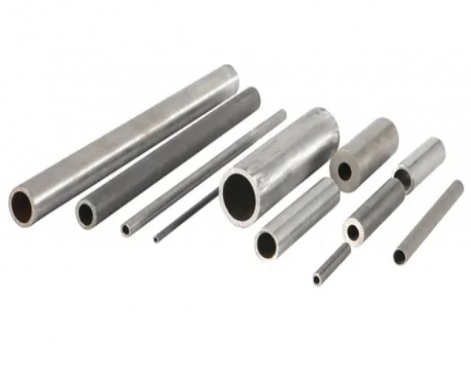Seamless steel pipes (a53 seamless pipe)have two types of wall thickness accuracy problems: horizontal wall thickness accuracy and longitudinal wall thickness accuracy. The lateral wall thickness unevenness refers to the difference between the wall thickness value and the average wall thickness value at a certain point in the same section, while the longitudinal wall thickness difference (unevenness) refers to the average wall thickness of each point along the length of the pipe. The difference in wall thickness values.
In the 1970s, Dr. Dietrich of MDM conducted experimental research on uneven lateral wall thickness.
The results show that:
(1) The perforation process plays a key role in the wall thickness accuracy of the finished pipe;
(2) The longitudinal rolling process can aggravate the uneven wall thickness of the perforated blank, while the tension reduction process can improve the uneven wall thickness. Therefore, in terms of the accuracy of the lateral wall thickness of the finished pipe, the key is to improve the quality of the perforation process to make it in the best condition. However, the long-term maintenance of a certain optimal state depends on automatic process control. As for the longitudinal wall thickness accuracy, it has strong process characteristics. This refers to the slub phenomenon of the tube end thickening of the tension reduction process and the full-floating mandrel continuous rolling pipe process, which needs to be improved by CEC control and slub control. However, the process automatic control software package developed in the 1990s has a very good effect on the improvement of wall thickness accuracy through three adjustment methods due to the use of adjustment, process control and production monitoring software packages.
In the 1970s, Dr. Dietrich of MDM conducted experimental research on uneven lateral wall thickness.
The results show that:
(1) The perforation process plays a key role in the wall thickness accuracy of the finished pipe;
(2) The longitudinal rolling process can aggravate the uneven wall thickness of the perforated blank, while the tension reduction process can improve the uneven wall thickness. Therefore, in terms of the accuracy of the lateral wall thickness of the finished pipe, the key is to improve the quality of the perforation process to make it in the best condition. However, the long-term maintenance of a certain optimal state depends on automatic process control. As for the longitudinal wall thickness accuracy, it has strong process characteristics. This refers to the slub phenomenon of the tube end thickening of the tension reduction process and the full-floating mandrel continuous rolling pipe process, which needs to be improved by CEC control and slub control. However, the process automatic control software package developed in the 1990s has a very good effect on the improvement of wall thickness accuracy through three adjustment methods due to the use of adjustment, process control and production monitoring software packages.









